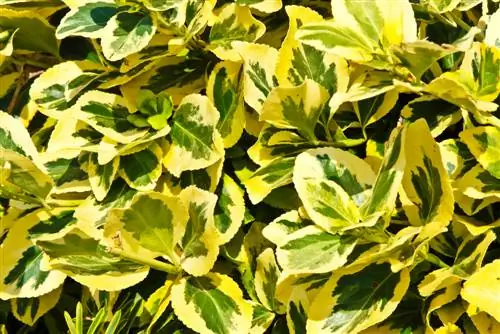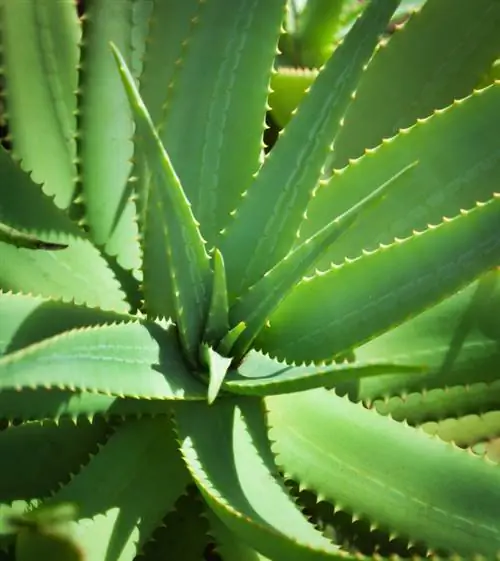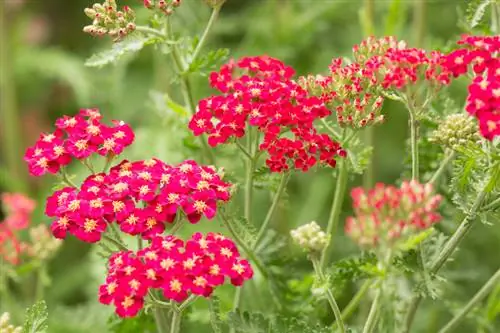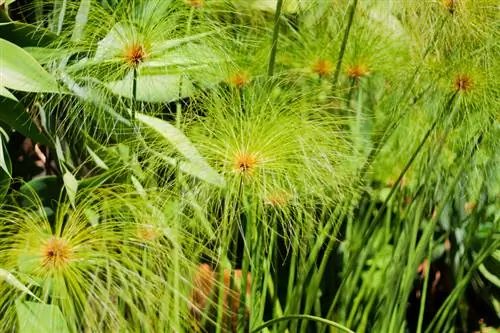- Author admin [email protected].
- Public 2023-12-16 16:46.
- Last modified 2025-06-01 06:02.
Privet can be found in many gardens and parks, in cemeteries and in the great outdoors. There are numerous species that are ideal for the garden but also for planting in containers. A small introduction to the most famous species.
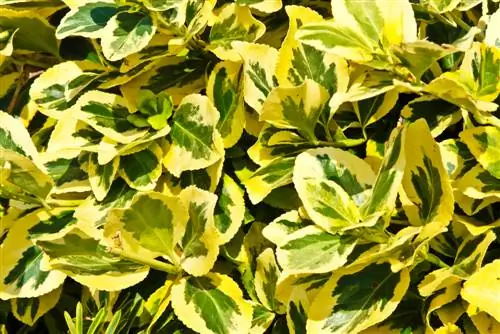
Which types of privet are suitable for the garden?
The best-known privet species for the garden include: Ligustrum japonicum 'Variegatum', Ligustrum obtusifolium regelianum, Ligustrum ovalifolium, Ligustrum ovalifolium 'Aureum', Ligustrum vulgare, Ligustrum vulgare 'Atrovirens', Ligustrum vulgare 'Lodense' and Ligustrum sinensis. Most varieties are hardy and easy to care for, but Chinese privet (Ligustrum sinensis) is not hardy.
Privet species - a brief overview
Privet belongs to the olive tree family and is also native to our latitudes. It is very robust, usually hardy and very easy to care for.
Garden retailers stock numerous species, all of which are suitable for planting as a hedge or as a single shrub. Privet can also be grown in a pot or as a bonsai.
Known and frequently offered privet species
| Botanical name | Variety name | leaves | Location | Special features | |
|---|---|---|---|---|---|
| Ligustrum japonicum ‘Variegatum’ | White variegated Japanese privet | medium green | Sun, partial shade | ||
| Ligustrum obtusifolium regelianum | Bushy Privet | medium green | Sun, partial shade | sparse growth | |
| Ligustrum ovalifolium | oval-leaved privet | dark green | for shady locations | ||
| Ligustrum ovalifolium ‘Aureum’ | Gold Privet | green with yellow border | sunny | conditionally hardy | |
| Ligustrum vulgare | Common Privet | medium-dark green | all layers | very robust variety | |
| Ligustrum vulgare ‘Atrovirens’ | Black-green privet 'Atrovirens' | blue-green | all layers | keeps leaves for a very long time | |
| Ligustrum vulgare ‘Lodense’ | Dwarf privet | green | Sun, partial shade | very frost resistant | |
| Ligustrum sinensis | Chinese privet | green | as bright as possible | not hardy |
Caution: The berries are poisonous to humans
The privet blooms in spring and produces small clusters of white flowers that are particularly fragrant in the evening. They resemble small lilac flowers and are very popular as a food source for insects.
The berries that ripen in autumn are slightly poisonous and should therefore never be consumed. They are very popular with birds.
Privet is not evergreen
Even if you read it again and again - privet is not evergreen. This misconception has become widespread because some species, such as Privet atrovirens, keep their leaves on the bush for a very long time. Atroviruses only shed their leaves over the course of the winter. The brighter the privet is, the longer the leaves stay on the bush.
Most privet species are hardy
Privet is a very robust type of shrub that thrives in our locations. Most species are hardy and can easily tolerate frost down to minus 10 degrees, at least if they are a little older.
For young plants, light winter protection such as a layer of mulch can be useful. Even if parts of the shoots are frozen, the shrub recovers very quickly and sprouts again in spring.
A well-known variety that is not hardy is Chinese privet. It is cultivated either as a bonsai in the house or as a pot plant and overwintered in the house.
Tip
Many garden owners are faced with the question of whether they should grow privet or cherry laurel. From an ecological point of view, privet is always preferable. Its flowers and berries are valuable food for the local fauna.

